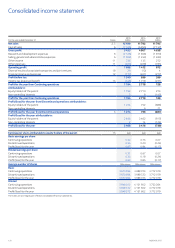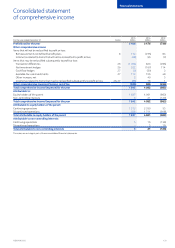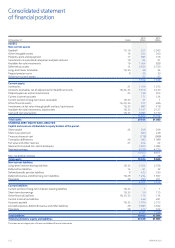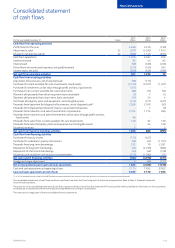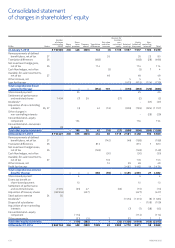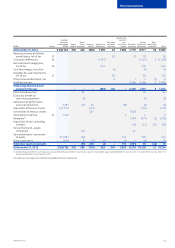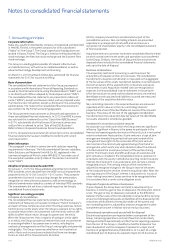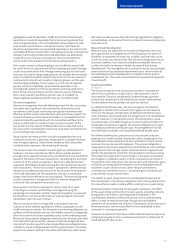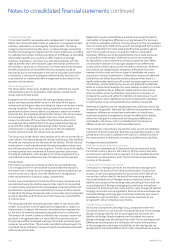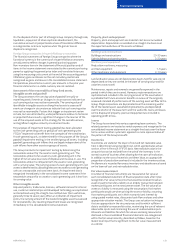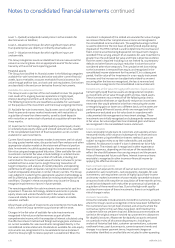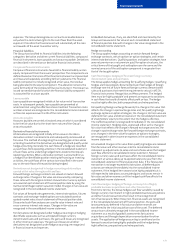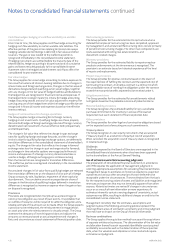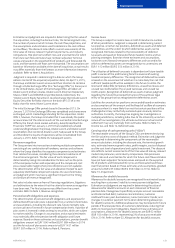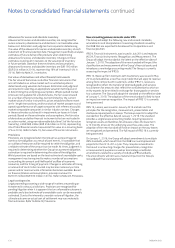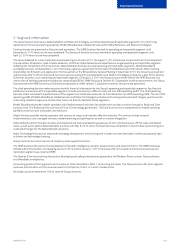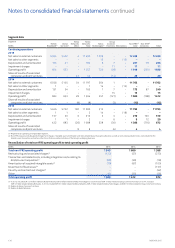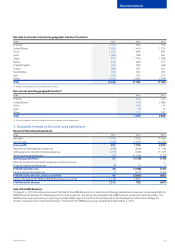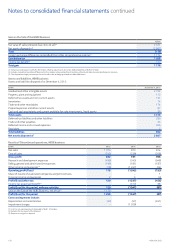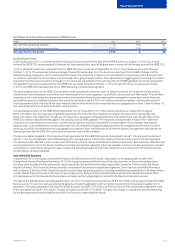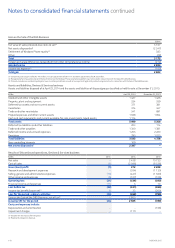Nokia 2015 Annual Report Download - page 132
Download and view the complete annual report
Please find page 132 of the 2015 Nokia annual report below. You can navigate through the pages in the report by either clicking on the pages listed below, or by using the keyword search tool below to find specific information within the annual report.130 NOKIA IN 2015
Level 1—Quoted (unadjusted) market prices in active markets for
identical assets or liabilities;
Level 2—Valuation techniques for which signicant inputs other
thanquoted prices are directly or indirectly observable; and
Level 3—Valuation techniques for which signicant inputs are
unobservable.
The Group categorizes assets and liabilities that are measured at fair
value on a recurring basis into an appropriate level of the fair value
hierarchy at the end of each reporting period.
Financial assets
The Group has classied its nancial assets in the following categories:
available-for-sale investments, derivative and other current nancial
assets, loans receivable, accounts receivable, nancial assets at fair
value through prot or loss, and cash and cash equivalents. Derivatives
are described in the section on derivative nancial instruments.
Available-for-sale investments
The Group invests a portion of the cash needed to cover the projected
cash needs of its ongoing business operations in highly liquid,
interest-bearing investments and certain equity instruments.
Thefollowing investments are classied as available-for-sale based
onthe purpose of the investment and the Group’s ongoing intentions:
(1) Available-for-sale investments, liquid assets consist of highly liquid,
xed-income and money-market investments with maturities at
acquisition of more than three months, as well as bank deposits
withmaturities or contractual call periods at acquisition of more than
three months.
(2) Investments in technology-related publicly quoted equity shares
orunlisted private equity shares and unlisted venture funds, classied
in the consolidated statement of nancial position as non-current
available-for-sale investments.
Current xed-income and money-market investments are fair valued
by using quoted market rates, discounted cash ow analyses and other
appropriate valuation models at the statement of nancial position
date. Investments in publicly quoted equity shares are measured at
fair value using exchange quoted bid prices. Other available-for-sale
investments carried at fair value include holdings in unlisted shares.
Fair value is estimated using a number of methods, including, but
notlimited to: the current market value of similar instruments; prices
established from a recent arm’s-length nancing transaction of
targetcompanies; and analysis of market prospects and operating
performance of target companies, taking into consideration public
market comparable companies in similar industry sectors. The Group
uses judgment in selecting the appropriate valuation methodology as
well as underlying assumptions based on existing market practice and
conditions. Changes in these assumptions may cause the Group to
recognize impairments or losses in future periods.
The remaining available-for-sale investments are carried at cost less
impairment. These are technology-related investments in private
equity shares and unlisted funds for which fair value cannot be
measured reliably due to non-existent public markets or reliable
valuation methods.
All purchases and sales of investments are recorded on the trade date,
that is, when the Group commits to purchase or sell the asset.
Changes in the fair value of available-for-sale investments are
recognized in fair value and other reserves as part of other
comprehensive income, with the exception of interest calculated using
the eective interest method and foreign exchange gains and losses
on current available-for-sale investments recognized directly in the
consolidated income statement. Dividends on available-for-sale equity
instruments are recognized in the consolidated income statement
when the Group’s right to receive payment is established. When the
investment is disposed of, the related accumulated fair value changes
are released from other comprehensive income and recognized in
theconsolidated income statement. The weighted average method
isused to determine the cost basis of publicly listed equities being
disposed of. The FIFO method is used to determine the cost basis of
xed -income securities being disposed of. An impairment charge is
recorded if the carrying amount of an available-for-sale investment is
greater than the estimated fair value and there is objective evidence
that the asset is impaired including, but not limited to, counterparty
default and other factors causing a reduction in value that can be
considered other than temporary. The cumulative net loss relating
tothe investment is removed from equity and recognized in the
consolidated income statement for the period. If, in a subsequent
period, the fair value of the investment in a non-equity instrument
increases and the increase can be objectively related to an event
occurring after the loss was recognized, the loss is reversed and
thereversal is recognized in the consolidated income statement.
Investments at fair value through prot and loss, liquid assets
Certain highly liquid nancial assets are designated at inception
asinvestments at fair value through prot and loss, liquid assets.
These investments must meet one of the following two criteria:
thedesignation eliminates or signicantly reduces an inconsistent
treatment that would otherwise arise from measuring the assets
orrecognizing gains or losses on a dierent basis; or the assets are
part of a group of nancial assets, which are managed and their
performance evaluated on a fair value basis in accordance with
adocumented risk management or investment strategy. These
investments are initially recognized and subsequently remeasured
atfair value. Fair value adjustments and realized gains and losses
arerecognized in the consolidated income statement.
Loans receivable
Loans receivable include loans to customers and suppliers and are
measured initially at fair value and subsequently at amortized cost
lessimpairment using the eective interest method. Loans are
subjectto regular review as to their collectability and available
collateral. An allowance is made if a loan is deemed not to be fully
recoverable. The related cost is recognized in other expenses or
nancial expenses, depending on the nature of the receivable to
reect the shortfall between the carrying amount and the present
value of the expected future cash ows. Interest income on loans
receivable is recognized in other income or nancial income by
applying the eective interest rate.
Cash and cash equivalents
Cash and cash equivalents consist of cash at bank and in hand and
available-for-sale investments, cash equivalents. Available-for-sale
investments, cash equivalents consist of highly liquid, xed-income
and money-market investments that are readily convertible to known
amounts of cash with maturities at acquisition of three months or less,
as well as bank deposits with maturities or contractual call periods at
acquisition of three months or less. Due to the high credit quality
andshort-term nature of these investments, there is an insignicant
risk ofchange in value.
Accounts receivable
Accounts receivable include amounts invoiced to customers, amounts
where the Group’s revenue recognition criteria have been fullled but
the customers have not yet been invoiced, and amounts where the
contractual rights to the cash ows have been conrmed but the
customers have not yet been invoiced. Billed accounts receivable are
carried at the original amount invoiced to customers less allowances
for doubtful accounts. Allowances for doubtful accounts are based
ona periodic review of all outstanding amounts, including an
analysisof historical bad debt, customer concentrations, customer
creditworthiness, past due amounts, current economic trends and
changes in customer payment terms. Impairment charges on
receivables identied as uncollectible are included in other operating
Notes to consolidated nancial statements continued


